The more assiduous on the social networks will remember that I bought a small electric car at the beginning of the year, a Dacia Spring, adapted to my daily commuting needs. I've been driving it every day for 6 months now, with over 10,000km on the odometer to date, which means I've had good feedback. As the 2024 version has been released in the meantime, this won't be a product test, but rather my feedback on my first electric car, as up to now I've been driving a combustion engine only. While I was intrigued by electric cars, my wife was fundamentally against them. What about after 6 months of intense use? Ready to find out more? We're off!
Introducing the Dacia Spring
The model chosen was the Dacia Spring Extreme 65, a model released in 2023, which I signed for in December of the same year, before the eco-bonus disappeared (I'll come back to this later), for delivery at the end of January 2024. Don't ask me why this model, it was all that was in stock at the time, following a major advertising campaign by the brand… Let's take a look at the car itself.
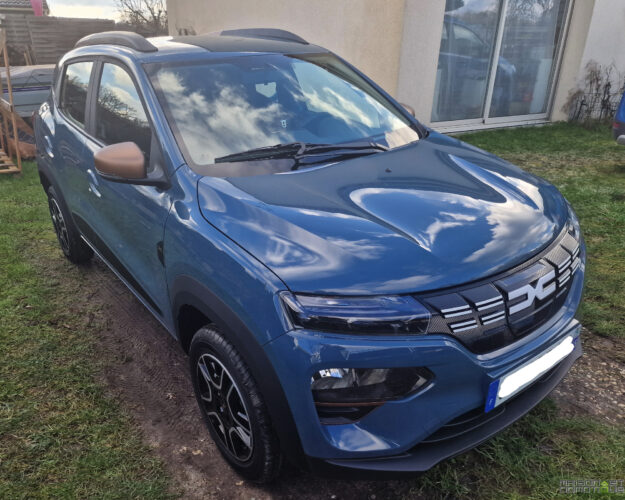
Compact, modern design
The Dacia Spring is a “small” car, officially with 4 seats only. It boasts a compact, dynamic silhouette, ideal for urban driving. With its compact dimensions (just 3.73 meters long, 1.58 meters wide and 1.51 meters high), it's perfectly suited to squeezing through narrow streets and finding a parking space in the blink of an eye. So practical!
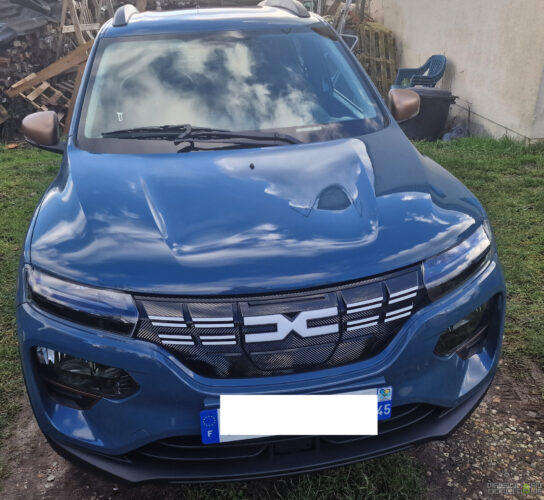
The exterior lines are simple but effective, with an imposing grille and LED daytime running lights giving it a modern, attractive look. The 14-inch wheels and body protectors reinforce its robust appearance, ready to take on the challenges of the city. Of course, tastes and colors are not debatable, but personally I find its slightly adventurous look rather “cool”.
A functional, ergonomic interior
Inside, the Dacia Spring is surprisingly spacious. Despite its compact dimensions, it offers a spacious cabin that can comfortably accommodate four adults. The seats are basic but offer good support for urban journeys. The 290-liter trunk is also an asset, offering ample space for shopping or weekend luggage.
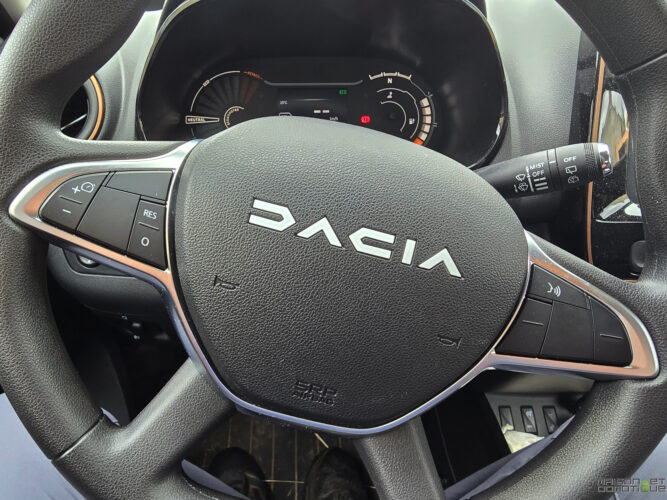
The dashboard is simple and functional. This Extreme version features a 7-inch touchscreen with a multimedia system compatible with Android Auto and Apple CarPlay. This is also my first experience with Android Auto, as my other vehicle was not equipped with it. It's a detail for some (like my wife) but very practical on a daily basis :) A few options are missing, such as automatic climate control, heated seats and steering wheel-mounted radio controls, but at this price, it's hard to complain.
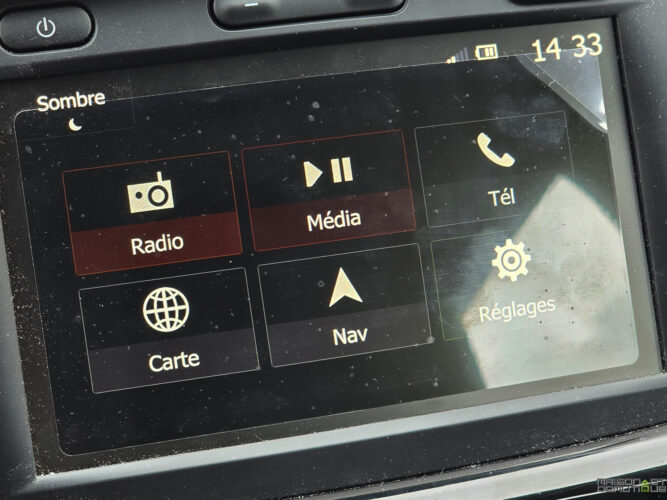
A powertrain for the city
Under the hood, the Dacia Spring is powered by a 65 hp electric motor in the Extreme version. That may not sound like much, but for a car of this size and weight (under 1,000 kg), it's enough. It offers excellent acceleration for starting at red lights and a top speed of 125 km/h, more than sufficient for urban and suburban roads.
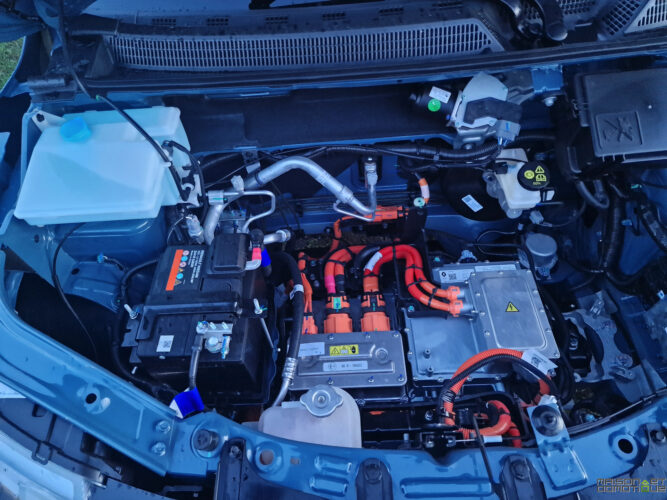
The 27.4 kWh battery provides a range of around 230 km according to the WLTP cycle. In actual use, this may vary according to driving conditions and temperature, but it's still more than sufficient for everyday use in town.
Quick and easy recharging
The Dacia Spring can be recharged in several ways. Using a standard household socket, it takes around 12 hours to fully recharge.
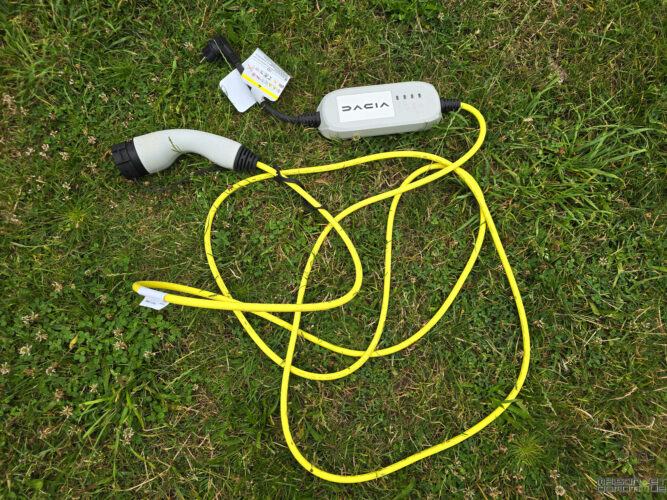
With a wallbox-type charging station, this time is reduced to around 5 hours. For those with access to a fast-charging station, it's possible to recover 80% of the charge in less than an hour. This is a strong point for those who want to limit downtime.
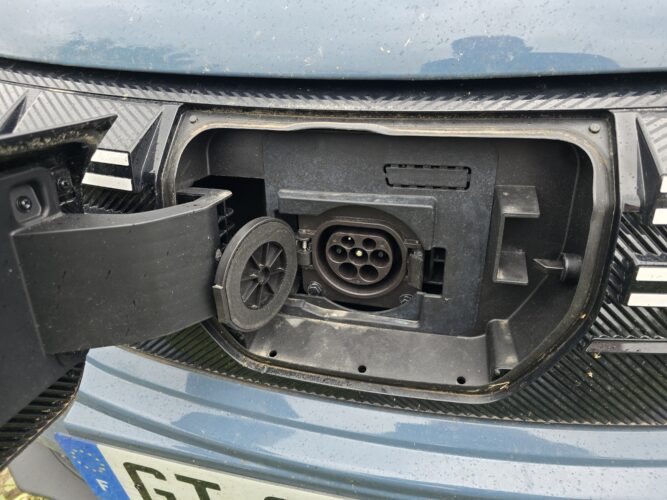
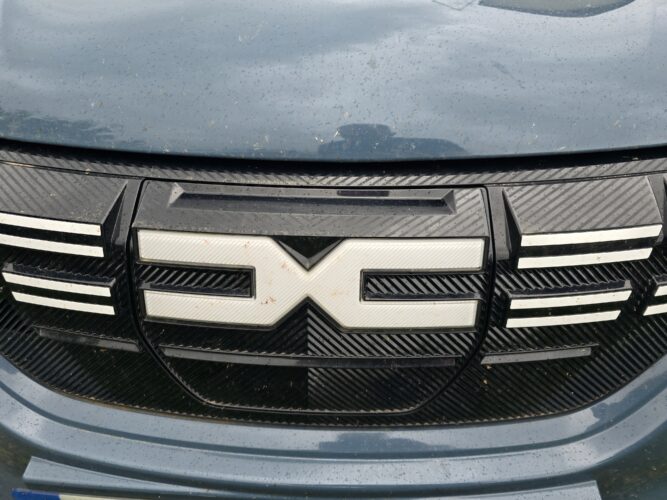
Safety and driving aids
In terms of safety, the Dacia Spring is no slouch. It is equipped with several driving aids, including ABS, ESP and emergency brake assist. The rearview camera and rear parking sensors also make maneuvering around town easier. However, some more advanced aids, such as adaptive cruise control or lane departure warning, are not available.

So much for a quick overview. Now, what does it really do in use after 10,000km?
Feedback: the Dacia Spring in everyday use
As mentioned in the introduction, I've been driving this little electric city car for 6 months, with over 10,000km already on the clock. It's my first experience of an electric car, and I have to say that its lightness and maneuverability make it an invaluable ally for navigating the urban jungle. But that's not all. Let's take a closer look.
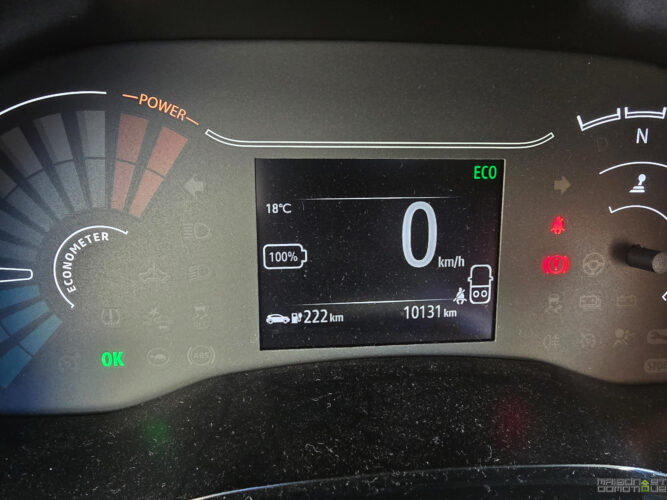
City driving: agile and practical
The Dacia Spring excels in urban environments. Thanks to its compact size and turning radius of just 4.8 metres, it slips easily through narrow lanes and traffic jams. Frequent starts and stops, typical of city driving, are facilitated by the responsiveness of the electric motor. Although its 65 hp doesn't turn it into a racing car, it packs enough punch for daily commutes. In any case, you can feel one of the differences with the internal combustion engine: as soon as you accelerate, it goes!
Rural driving: also very comfortable!
Although it's primarily a city car, the Dacia Spring also does very well in rural areas. As roads here are limited to 80km/h, and exceptionally 90, its power is more than sufficient. In fact, we've learnt to respect the speed limit, because it's both safer and helps maintain the car's range. Of course, the faster you drive, the more the range melts away, so it won't be at all suitable for freeway driving, for example. As I live in the countryside, I've done most of my driving on departmental and national roads, with a bit of city driving thrown in. So this little electric car does the job perfectly here too.
Driving comfort: simplicity and efficiency
Driving comfort is another of the Spring's strong points. The driving position is high, offering good visibility on the road. The seats, though basic, are comfortable for short to medium trips. The suspension is firm, which can be a little harsh on poorly maintained roads, but it does a good job of absorbing road irregularities. Be sure to slow down before speed bumps, however…
One area for improvement could be the standard tires, which lack grip in the wet. A change of tires can significantly improve handling and safety. But if you take it easy, it does the job.
The cabin is well soundproofed for a car in this range, so you can fully enjoy the silence of electric driving. And I love that! The controls are simple and intuitive, and the 7-inch touchscreen is easy to use. Connectivity with Android Auto and Apple CarPlay is a real plus for staying connected and navigating with ease. It's a detail I really appreciate, and one that even lets me have a hand in my Home Assistant home automation system.
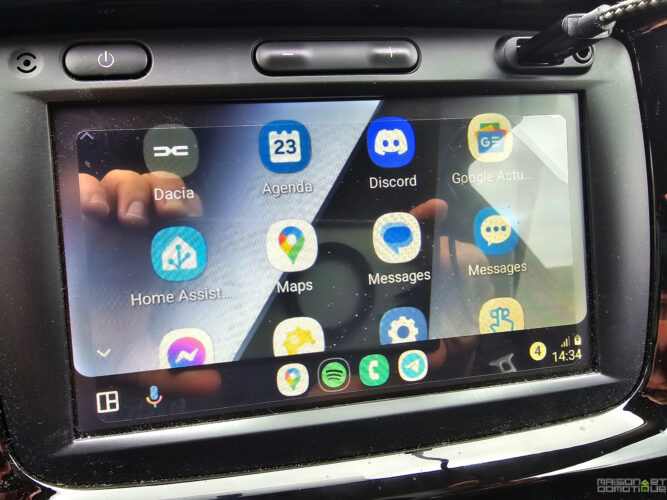
Handy for opening the gate remotely or switching on the outside light when you're out late at night, especially as a button on the steering wheel can be used to trigger the voice assistant to give you commands :)
Autonomy and recharging: optimized management
With a claimed range of 230 km in the WLTP cycle, the Dacia Spring is perfectly suited to urban and suburban journeys. In actual use, you can expect a range of between 160 and 220 km, depending on driving conditions and outside temperature. Winter in particular is more critical, with cold temperatures reducing range to 160/170km, which is still quite sufficient for my needs. At the moment, on the other hand, with good weather, I'm hitting 220km without batting an eyelid. For a car in this segment, that's quite decent, especially as the range indicated by the speedometer is very accurate (on one occasion, I came home with only 10km of range on arrival – the on-board computer hadn't made a mistake, phew!).
Recharging is another point worth highlighting. On a domestic socket, the full recharging time is around 12 hours, which is ideal for night-time recharging during off-peak hours. As a Tempo subscriber, even red days didn't prevent me from recharging the car during off-peak hours in the evening. For those who can install a wallbox at home, recharging time is reduced to around 5 hours. Fast-charging stations allow you to recover 80% of the battery in less than an hour, which is great for unexpected journeys. For my part, I'll simply be switching to a dedicated, reinforced socket, which I'll be installing shortly, as at present I simply recharge it using a conventional outdoor socket. But with a recharge every two days, no worries so far, it's holding up well, and I don't need to charge very quickly. With this type of vehicle, you develop habits that are a bit different, and you anticipate your trips :)
Profitability: significant savings!
I'll skip over the ecological argument for switching to electric. There are pros and cons. With its zero tailpipe emissions, the electric vehicle helps reduce air pollution in urban areas, a significant benefit for public health. However, it's important to recognize that battery production and recycling have an ecological impact. Nevertheless, efforts to improve recycling technologies and the growing use of renewable energies to generate electricity are gradually reducing this impact. While the production of an electric vehicle is more polluting than an equivalent internal combustion model, it has been proven that electric vehicles are 15 times less polluting than internal combustion vehicles over their entire lifespan. A very interesting book on the subject, by the way:
While I'm not insensitive to ecological issues, it wasn't my primary motivation. With rising petrol prices, and a hundred or so kilometers to cover every day, especially for the kids (since I personally work from home), the primary motivation was clearly financial.
The Dacia Spring was designed to be affordable from the outset. With a starting price of around €20,000, it was one of the cheapest electric cars on the market. The various government subsidies and the ecological bonus further reduced this cost, making the purchase of a Spring particularly attractive. Despite this, I didn't go ahead with the purchase: from the moment you switch to electric power, a technology that is evolving very rapidly and on which we still have little long-term return, I personally think that it's still risky to buy. The discount is likely to be very rapid in the face of new, more powerful batteries that are quicker to charge, and the need to replace current batteries in a few years' time is likely to put a big slap in the face of the savings made. So I've opted for long-term leasing. There are several advantages to this:
- since it's a lease, the car doesn't belong to us, and if there's the slightest technical problem with it, it's up to the dealer to sort it out
- maintenance is included in the contract, so you don't have to worry about extra costs
- you don't have to worry about battery life, whether to charge to 80% or 100%, etc., as I've seen in some discussions. In three years, the vehicle goes back to the dealer, and battery life isn't our problem (yes, it's “selfish”, but we don't have the stress of having invested 20K and seeing our investment deteriorate faster than expected).
Nevertheless, even with LDD, the eco bonus was possible, lowering the monthly cost of the lease by the same amount. As I was still entitled to a €7,000 eco-bonus at the time, the monthly rental cost came to just €147, without any downpayment.
To put things in context, the initial decision wasn't based on any special fondness for electric cars or ecological motivation. I was simply being factual, bringing out my controlling side and my spreadsheet :p . I'm not a fan of “cars”, I like beautiful cars, I like to look at them, but owning a car is a big, unprofitable expense, which I'd rather invest in more profitable things. For me, a car is first and foremost a means of locomotion, to get from A to B. My main vehicle is a Dacia Lodgy, which is extremely practical for its 7 seats, and its large, roomy trunk, which allows us to go on roadtrips with our Naitup roof tent. That's all I need.
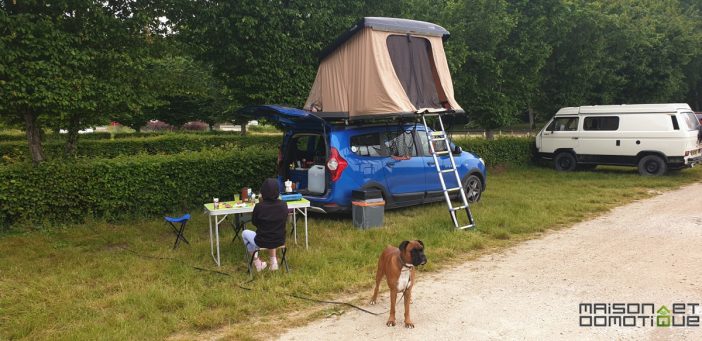
My constraints were as follows: two children at school, one of whom is in private education and has no public transport, and above all my eldest daughter, aged 16, who is an apprentice and therefore needs to be driven to her place of work every day. This tour represents 100km a day, or around 2,400km a month (the children have classes Monday to Friday, my daughter works Tuesday to Saturday…). At 8 liters per 100 at €1.99 per liter of SP98, that meant a petrol bill of almost €400. Not to mention the premature wear and tear on our main vehicle and the cost of servicing it.
Electricity prices have certainly risen sharply, but we're still a long way from the price of petrol. As I'm on a Tempo contract, and off-peak hours are generally enough to charge the Dacia Spring, that works out at around 10h x 2.3kwh x 0.13€ = about 3€ per charge (it's much cheaper to charge at home than at a public station, unless you take advantage of a free one). I recharge every day in winter, but I can reduce this to once every two days in summer, as the range is much better. So I spend between €60 on electricity in winter, and around €40 in summer. That's almost 10 times less than I spend on petrol (and I save my main vehicle, which we keep for family outings). And that's without counting part of my recharging on freesolar energy, thanks to my surplus production…
Then of course there's the cost of the rental, and the insurance to add. To be transparent:
- LDD rent: €147
- insurance (comprehensive, with 50% bonus): €50
- electricity: €60
- for a total of 257€.
Which is almost half my previous petrol budget. At the same time, I'm saving on my main vehicle (which I won't have to change as quickly) and have the “luxury” of a second vehicle, for example, when I need to be in two different places with my wife.
That's all there is to it. With all the increases we've had to endure from all sides in recent years, it's a significant saving.
My last evocation of an electric vehicle on Facebook had been very stormy, for a simple screenshot of the application 😱 . Here, I'm simply sharing my feedback on this vehicle, for MY situation and MY need. I'm not here to sell you a Spring. And to those who swear by Tesla, you'll understand that it's too expensive and oversized for my needs, so there was no question of choice. What's more, this situation was valid until the end of last year, when the Dacia Spring was still benefiting from the eco bonus. The regulations have changed, and the new Spring 2024 no longer benefits from the bonus, which considerably reduces its appeal compared with other competitors.
Bonus: a connected vehicle!
If this was light years away from my motivation to buy this vehicle, I was pleasantly surprised when I discovered that the Dacia Sprint was a connected vehicle!
First of all, it's equipped with Android Auto (and also Apple), which means you can enjoy a host of applications on your screen, including Home Assistant. This means you can find certain favorites on your screen to control your home remotely: opening the gate, activating the alarm, turning on the heating before coming home, and so on.
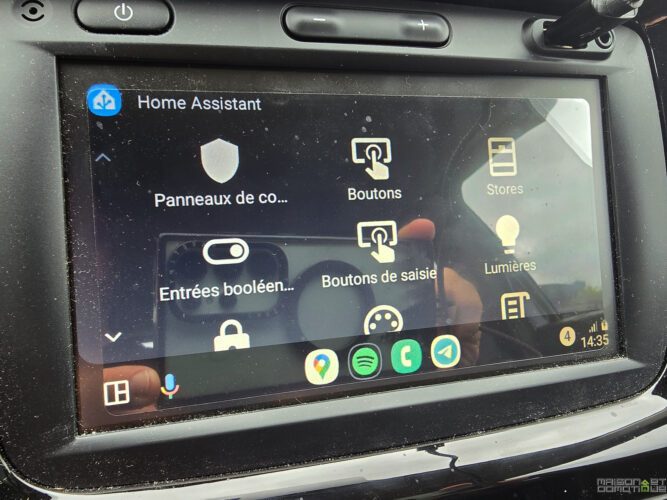
But the Dacia Spring also has its own mobile application, which lets you track its geographical position (handy when you've lost it in the parking lot…), its range, and its current charge.
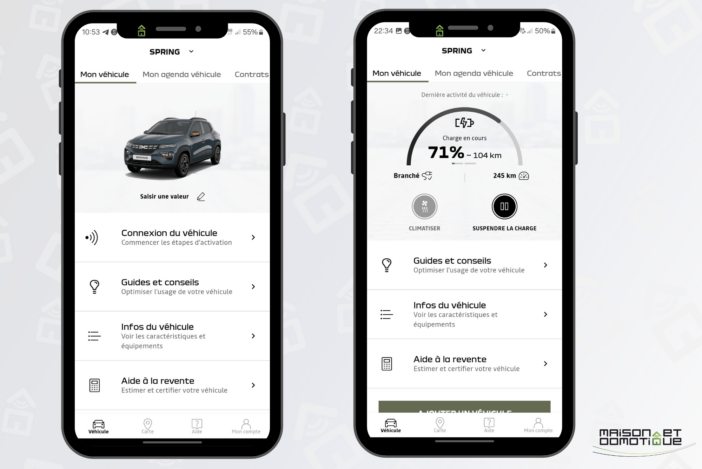
Two buttons can even be used to pause or restart charging, and activate the air conditioning. At first, I plugged the car into the electrical socket when I got home, and paused the charge, with a reminder at 10pm. Then I'd put the car back on charge at the start of off-peak hours. Unfortunately, the app doesn't allow you to program times, but at least it meant I didn't have to go out again in the evening to plug it in. The air-conditioning is also very useful in winter: you don't have to leave the house to turn on the heating before you leave, so that you can get to your warm car :)
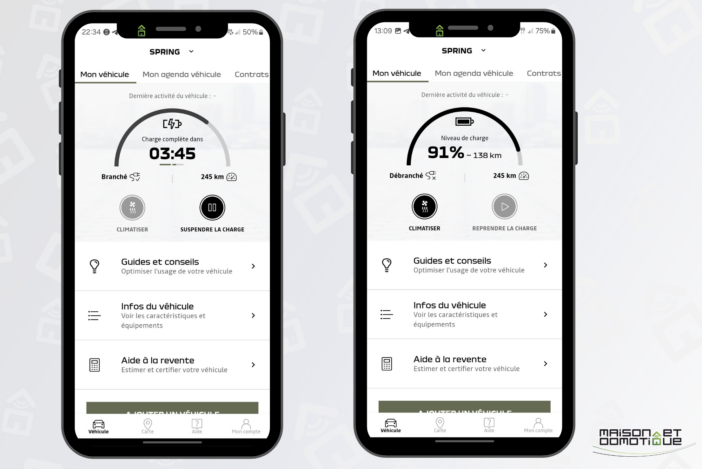
All in all, the application is rather limited. But still handy to have. However, developers have created a Home Assistant plugin for Renault vehicles (including Dacia). This makes it possible to retrieve all the car's information from our home automation system:

But charging and air-conditioning controls are also available and can be used in scenarios. What the official application can't do, Home Assistant can :)
Here I have a scenario that automatically pauses charging if Home Assistant detects the plug being plugged in during peak hours. When it switches to off-peak at 10pm, the system recharges the car and sends me a notification. I also receive a notification when charging is complete.
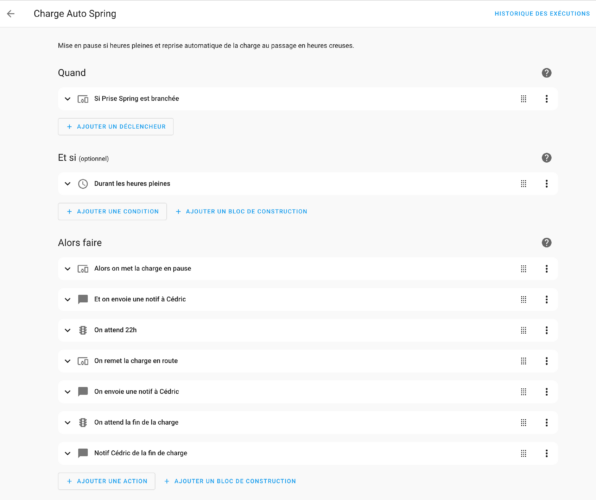
Super convenient!
Conclusion
The Dacia Spring represents my first experience of electric vehicles, both as a driver and as a daily user. Admittedly, it's a small vehicle (limited to 4 seats when there are 5 of us, but enough for the daily school/work trips when there are only 4 of us), with a limited range. But these parameters had been taken into account in relation to our needs, and its autonomy is more than sufficient for our daily journeys, despite our daily 100km, and even in winter when autonomy is considerably reduced.
Overall, it's a pleasant vehicle to drive, comfortable enough for short trips, and very economical to run. It's still an “expensive” vehicle to buy compared with a combustion engine, as the model I own normally cost €22,000 (before subsidies). For a small 4-seater city car. On the other hand, my 7-seater Lodgy cost €18,000, and features air-conditioning, all steering-wheel-mounted controls, and a real audio system (the Spring only has two front speakers). But this is electric power, and the Spring is still one of the least expensive models in this field.
As far as we're concerned, it's the perfect answer to our daily commuting needs. Although the Dacia Spring was conceived as an economical and practical option for city dwellers, it's no less interesting for country dwellers :) Even my wife, who was worried about autonomy, is now convinced, thanks to an autonomy that meets our needs and to great savings every month on the budget (not to mention the fact that she no longer has to drive me on my occasional business trips ;-).
In short, if we're not ready to buy one yet, having a leased car has totally convinced us!

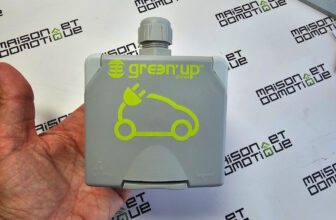
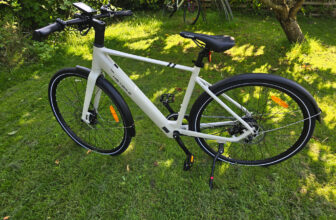
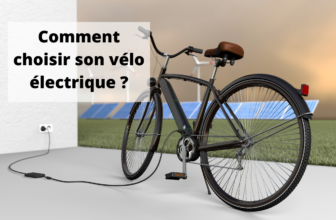
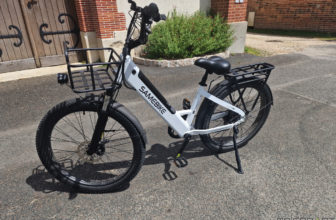

Please remain courteous: a hello and a thank you cost nothing! We're here to exchange ideas in a constructive way. Trolls will be deleted.